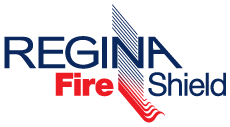Laminate
Manufacture

General
Product Details
• FireShield® must be placed as the outermost layer of the laminate, closest to the heat loaded region
• Industrial grade epoxy, polyester and vinyl ester resin systems are compatible with FireShield®
• FireShield® may be used in standard composite manufacturing processes. These include hand lay-up, vacuum bagging, Vacuum Bag Resin Infusion (VBRI), RTM Lite, RTM, pultrusion and autoclave (prepreg) processes
• FireShield® is NOT applicable to the Dough Moulding Compound (DMC) manufacturing processes
• FireShield® is to be treated in the same manner as a reinforcement ply located on one or both outermost surfaces of the laminate. FireShield® may also be used to encapsulate the entire surface of the composite
• Fire, smoke and toxicity screening tests should be performed in accordance with test specifications for the application requirement. Usually, the test specimen thickness is to be no thicker than the minimum thickness for the application.
• Any cosmetic coating (paints, adhesives, gelecoats, etc) applied after fabrication will hinder the performance of FireShield®. If the finished part is to have a cosmetic coating of any kind, the specimen must be subjected to screening tests in the as-finished condition to confirm that FireShield® can be used effectively, so that the part meets the specification requirements.
• FireShield® materials should always be stored in sealed polyethylene bags to reduce damage, contamination of surrounding chemicals and moisture absorption. FireShield® left out of the protective pack may pick up moisture, causing blisters in the final product.
• Only one ply of FireShield® is necessary to protect the region requiring fire protection. Multiple layers of FireShield® should not be applied sequentially in the part lay-up
• In regions where two or more plies of FireShield® meet due to geometry constraints, a minimum overlap of 1 mm must be maintained. It is crucial that all surfaces requiring fire protection are covered with FireShield®. If for some reason there are regions that cannot be physically covered with FireShield®, an intumescent coating must be applied after the part is fabricated.
The most common processes of FireShield®.
COMPLEX
Shapes
3D layups require shear in the substrate, to avoid creasing and tearing, or cutting darts and the like to create the shape. Refer to Substrate type here.
INSTRUCTION
Documents
Select your manufacturing process below as a pdf document.
POST PRODUCTION
Practices
INSTALLATION OF FIRESHIELD® PROTECTED LAMINATES
FireShield® is a surface protecting material. If flame, during a fire, can reach unprotected parts of a laminate, fire protection Is compromised.
During installation, consider all:
EDGES AND OVERLAPS
PENETRATIONS AND FASTENINGS
CORNERS
WELDING AND OTHER JOININGS
SURFACE OR THROUGH-THICKNESS INTRUSIONS
If the laminate surface is damaged or holes are drilled through the thickness such that resin/fibres are exposed, an intumescent coating/paint must be applied over that region to protect the exposed resin/fibre.
The following intumescent coating suppliers have products that have been tested successfully with FireShield®. Review the technical data sheets and MSDS from the suppliers for procedures on how to use these coatings. The two tested intumescent coatings are:
Firefree 88
Distributor:
Brenntag Australia Pty. Ltd.
Headoffice: 260-262 Highett Road,
Highett VIC 3190
With branches in Brisbane, Sydney and Perth.
Tel: +61 3 9559 8333 Fax: +61 3 9532 0802
Email: info-aus@brenntag-asia.com
NoFire
Distributor:
NQ Fire Protection Pty Ltd
3 Scott Street
Cairns, QLD 4870, Australia
Tel: 1 300 666 447
Email: nofire@nqfire.com
Installation, edges, corners, joinings - welds, bolts etc.
Where stuctural sections of FireShield® protected laminate are joined to other materials, any potential flame path must be closed by applying a fireproof mastic.
Where the laminate comes against other materials, brick, steel, flashings etc., any potential flame path must be closed by applying a fireproof mastic.
The following mastic product has been tested successfully with FireShield®.
Review the technical data sheets and MSDS from the supplier for procedures on how to use this sealant.
BOSS FireMastic 300
BOSS Fire & Safety Pty Ltd
Phone 1300 602 677
Fax 1300 602 677
Email: info@bossfire.com.au

